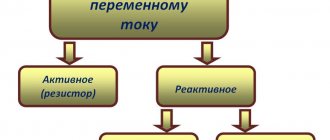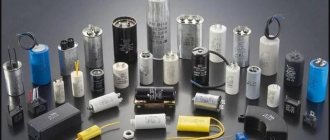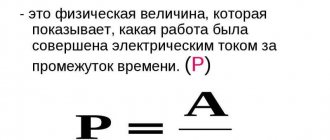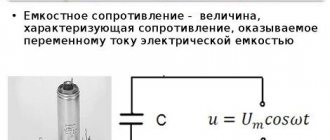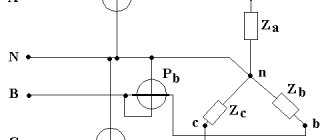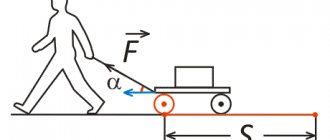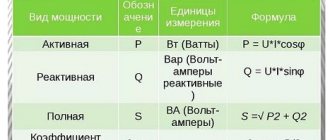Knowing the strength of the current flowing in the circuit in amperes is important for calculating the cross-section of the wire used to lay the wiring and choosing a circuit breaker that protects the network from overloads. A cross-sectional value that is larger than necessary causes additional costs, while a smaller one will cause overheating of the electrical wiring, which can lead to melting of the cable insulation and a fire.
The correct choice of the machine is also important, since a large current reserve will be useless if the switch trips late and the equipment has time to fail, and too small a reserve will cause a very frequent emergency shutdown when the power consumption increases within acceptable limits.
The current in a 220 V outlet usually does not exceed 6 amperes. This means that the total power of electrical appliances connected to the outlet should not exceed 1300 W. Otherwise, special wires with a larger cross-section must be laid.
Expert opinion
It-Technology, Electrical power and electronics specialist
Ask questions to the “Specialist for modernization of energy generation systems”
Power in three-phase AC circuits The calculation of a three-phase system is approximate, since it is impossible to accurately determine which devices will be connected at a given moment. Ask, I'm in touch!
Power calculation
The formula for electric current power and the calculation principle will differ when considering direct and alternating current circuits. Direct current is used in the on-board network of cars, portable devices, and the supply voltage of trolleybuses. Variable - used in electrical wiring of buildings, powerful electric motors and generators.
At constant voltage
To guess the current value, you need to know the power of the electricity consumers used. Calculation of current by power is made from this value using the formula :
where I is the current strength, U is the network voltage, P is the total power that the connected devices will consume.
With alternating voltage
AC voltage is used to power the electrical networks of home and office buildings. Its use is justified for several reasons :
And to power DC devices, various types of rectifiers are used.
AC power is highly dependent on the parameters of the powered load. Therefore, the formula for electrical power in variable networks takes the form:
In such circuits, this is active power, that is, during operation it is converted into other types of energy: electromagnetic and thermal.
There is also reactive power. It determines the energy supplied from the power source to the reactive elements, and then returned by these elements back. The current power formula for reactive circuits is:
What kind of lighting do you prefer?
Built-in Chandelier
Here sinφ characterizes the contribution to the total power of inductive and capacitor elements. Reactive power is measured in units such as var (volt-ampere reactive).
Three-phase systems are common in industrial electrical networks. Their advantages are important for the industry :
- More economical transmission of electricity over long distances;
- Reducing costs when creating electric motors of a 3-phase system;
- Uniformity of mechanical load on the electric generator.
A feature of three-phase electric current systems is that the voltage in these systems is increased, equal to 380 V. With a load distributed over three branches, this leads to a decrease in the operating current in relation to a single-phase system, in which the operating voltage is 220 V. Formula for calculating power in a three-phase circuit will have the following form:
The increasing factor of 1.73 here is associated with a distributed load and less influence of the reactive component in such systems.
It is easy to calculate the value of alternating current, knowing the power consumption, using the indicated formulas. For example, for a single-phase network:
Periodic alternating current
Expanded diagram of periodic alternating current
Intermittent alternating current
is called an electric current that, at regular intervals of time, repeats the full cycle of its changes, returning to its original value.
In the presented diagram we see that at regular intervals T{\displaystyle T} the current graph is reproduced completely without any changes.
The time T{\displaystyle T}, during which an alternating periodic current completes a full cycle of its changes, returning to its original value, is called the period of the alternating current
.
The reciprocal of the period is called frequency
alternating current:
f=1T{\displaystyle f={\frac {1}{T}}}, where f{\displaystyle f} is the frequency of alternating current;
T{\displaystyle T} is the period of alternating current. If we express time T{\displaystyle T} in seconds ( sec
), then we will have:
f=1T1sec{\displaystyle f={\frac {1}{T}}\left}, that is, the dimension of the alternating current frequency is expressed in 1/s
.
The frequency of alternating current is numerically equal to the number of cycles per second.
The unit of measurement of alternating current frequency is 1 hertz ( 1 Hz, 1 Hz, 1 Hz
).
Hertz is a unit of the International System of Units ( SI)
), named after Heinrich Hertz.
In terms of basic SI units, the hertz is expressed as follows: 1 Hz = 1 s−1
.
Decimal multiples and submultiples are formed using standard SI prefixes.
The frequency of alternating current is equal to one hertz if the period of the current is equal to one second (one complete cycle in one second).
Frequency standards
In most countries, frequencies of 50 or 60 Hz are used in electrical engineering (60 Hz is the version adopted in the USA and Canada). Some countries, such as Japan, use both standards (see)
.
16 ⅔ Hz is still used on some European railway networks (Austria, Germany, Norway, Sweden and Switzerland), 25 Hz on older US railway lines. (Cm. ).
In aviation and military equipment, a frequency of 400 Hz is used to reduce the weight of devices or to increase the rotation speed of AC electric motors.
The rotor speed n1min{\displaystyle n\left} of a synchronous electric motor is determined by the formula:
n=60fp{\displaystyle n={\frac {60f}{p}}}, where
f{\displaystyle f} — alternating current frequency;
p{\displaystyle p} is the number of pole pairs.
Since the minimum number of pole pairs is one, then a synchronous electric motor operating on alternating current with a frequency of 50 hertz will develop 3,000 revolutions per minute, and an electric motor operating on alternating current with a frequency of 400 hertz will develop 24,000 revolutions per minute.
The rotor speed of an asynchronous electric motor is less than the frequency of the current supplying it and depends on the load. Slip is the difference between the speed of the rotating magnetic field and the speed of the rotor. In communications technology, higher frequencies are used, and in particular in radio engineering - on the order of millions and billions of hertz.
How to correctly calculate the power of a three-phase network
In order to find out the power of electricity consumed by voltage and current, you need to know how much energy is consumed. To do this, you need to compare all the energy consumers used (you can find out the amount of energy consumed by a particular item by reading the information on the tag, case or passport data of the device).
You should also know your type of power in a three-phase circuit: uniform (symmetrical) or uneven (asymmetrical).
The peculiarity of a symmetrical load is that the distribution of the load among the phases is equivalent (some small differences are not taken into account), and in the neutral wire the power of the three-phase current is 0.
With an asymmetrical load, the current in all phases is different. For example, if a building is illuminated using a three-phase network, where all 12 lamps are lit in the first row, in the second row the 6th lamp is not lit, and in the last row the 11th lamp is not lit.
In such a situation, you need to use clamps to separately determine the current in all phases.
Formulas for correctly calculating the total power of a three-phase circuit
Power is a physical measure in which the time it takes to perform a job is equal to the amount of that work.
P(electric power) is a unit that represents the rate at which electrical power is converted into other types of power. The unit of measurement is Watt (W/W).
Power formula for: - Direct current: P = I (current, A) × U (voltage, V). Calculation of current by power also occurs according to this formula. — AC phase network: P = I × U × cos (power factor) × √3 Cos – power factor, showing the efficiency of energy use, is equivalent to the ratio of total power to active power. Cos = S(apparent power, VA) / P(active power W)
Active power (P) is the real power in which the energy absorbed by the load is converted into real work. An example of this process is light.
P (W) = I × U × cos Reactive power (Q) - non-watt power, does not take part directly in the process, but simply returns back to the original source. P (VAR) = I × U × sin The total power of the electrical sensor (S) is a quantity consisting of both reactive power and active power. S (VA) = I × U or S = √(P2 + Q2)
Expert opinion
It-Technology, Electrical power and electronics specialist
Ask questions to the “Specialist for modernization of energy generation systems”
Calculation of the power of a three-phase network by current: calculation of power by current and voltage, formulas for calculating indicators Knowing the strength of the current flowing in the circuit in amperes is important for calculating the cross-section of the wire with which the wiring is laid, and choosing a machine that protects the network from overloads. Ask, I'm in touch!
Active value Real Power
Active power P is measured in watts. Abbreviated versions of the unit of measurement: W (Russian designation) or W (international). The very concept of this power value means the average value of the instantaneous indicators of this characteristic over a period of time T (period). The general formula in this case is as follows:
For electrical circuits with one phase of current varying along a sinusoid, the formula looks like this:
.
In this expression, Ι and U are the values of electric current and voltage in root-mean-square representation. And the angle φ shows how much the phases are shifted between these physical quantities.
Active power indicates how quickly electrical energy is converted into other types: thermal or electromagnetic.
It can be expressed both through the current strength and the active resistance of the circuit r, and through the voltage and conductivity g according to the formula:
.
In any electrical circuits, this type of power is equal to the sum of the values on the individual elements. In the three-phase version, the indicators for each individual phase are summed up.
Characteristics of a three-phase system
A three-phase power supply system is characterized by several voltage and current values. It all depends on between which points of the circuit the measurements are made:
The relationship between these parameters:
With symmetrical load distribution, the currents in all wires are equal. In a four-wire circuit (with a grounded zero), there is no current in the neutral conductor, so even if the zero is broken, the network continues to function normally.
In the case where the energy consumption differs between phases, some current flows in the neutral wire. A complete break in the neutral conductor causes a phase imbalance, so the voltage on the wires can change in the range from zero to linear.
Important! Therefore, to correctly calculate and reduce the load on generating equipment, power factor correctors are installed in reactive circuits. Circuits with a corrector bring the cosϕ coefficient closer to unity.
Expert opinion
It-Technology, Electrical power and electronics specialist
Ask questions to the “Specialist for modernization of energy generation systems”
Power of a three-phase network: calculation of total power using the formula How much electricity will a three-phase asynchronous motor, connected to a network with a linear voltage of 380 V, and consuming a current of 10 A in each phase, consume? Ask, I'm in touch!
Reactive power measurement in three-phase circuits
- electric sauna (12 kW) - 60 A;
- electric stove (10 kW) - 50 A;
- hob (8 kW) - 40 A;
- instantaneous electric water heater (6 kW) - 30 A;
- dishwasher (2.5 kW) - 12.5 A;
- washing machine (2.5 kW) - 12.5 A;
- Jacuzzi (2.5 kW) - 12.5 A;
- air conditioner (2.4 kW) - 12 A;
- Microwave oven (2.2 kW) - 11 A;
- storage electric water heater (2 kW) - 10 A;
- electric kettle (1.8 kW) - 9 A;
- iron (1.6 kW) - 8 A;
- solarium (1.5 kW) - 7.5 A;
- vacuum cleaner (1.4 kW) - 7 A;
- meat grinder (1.1 kW) - 5.5 A;
- toaster (1 kW) - 5 A;
- coffee maker (1 kW) - 5 A;
- hair dryer (1 kW) - 5 A;
- desktop computer (0.5 kW) - 2.5 A;
- refrigerator (0.4 kW) - 2 A.
Video
The simplest example is the calculation of energy consumption by a symmetrical load. How much electricity will a three-phase asynchronous motor consume, connected to a network with a linear voltage of 380 V, and consuming a current of 10 A in each phase? Power factor cosϕ=0.76. Then the power consumption is:
- Phase voltage – 220 V;
- Line consumption – 10 A, 5 A, 2 A;
- The first two phases are connected to an active load (electric stove, kettle);
- The third is loaded with fluorescent lamps with cosϕ=0.5.
Ptotal=Uа∙Iа∙cosϕа+ Ub∙Ib∙cosϕb+ Uc∙Ic∙cosϕc=220∙10+220∙5+220∙2∙0.5=3520 VA.
Using an online calculation calculator, you can get rid of most errors and reduce calculation time. You just need to enter the data correctly according to the current parameters
Useful tips Connection diagrams Principles of operation of devices Main concepts Meters from Energomer Precautions Incandescent lamps Video instructions for the master Testing with a multimeter
AC generation
In addition to standard generators, inverters and phase splitters are used to produce alternating current.
Inverter
This is a device with the help of which direct current is converted into alternating current. During this process, the output voltage also changes. The device circuit is an electronic generator of a sinusoidal pulse voltage of a periodic nature. There are options for inverters that operate with a discrete signal. Inverters are used for autonomous power supply of equipment from constant voltage batteries.
Inverter 12/220 V, power 1500 W
Phase splitter
Another way to get multiple phases from a signal is to split it into several phases. This is done using a phase splitter. Forced processing of digital or analog signals is used both in radio electronics and power electrical engineering.
To supply power to three-phase asynchronous motors, a phase splitter based on them is used. To do this, the windings of a three-phase motor are connected not by a star, but in a different way. Two coils are connected to each other in series, the third is connected to the midpoint of the second winding. The motor is started as a single-phase one, after acceleration, an EMF is induced in its third winding.
Interesting. In the case of phase splitting using this method, the phase shift between windings 2 and 3 is not 1200, as it should ideally be, but 900.
Tags: ampere, amplitude, antenna, sconce, type, high-voltage, extinguish, generator, engine, diagram, house, , cable, like, , magnet, power, load, voltage, neutral, nominal, variable, constant, principle, wire, start, , work, size, calculation, resistor, row, light, LED, network, system, ten, type, current, transformer, three-phase, three-phase current, , phase, electric motor, electronic

